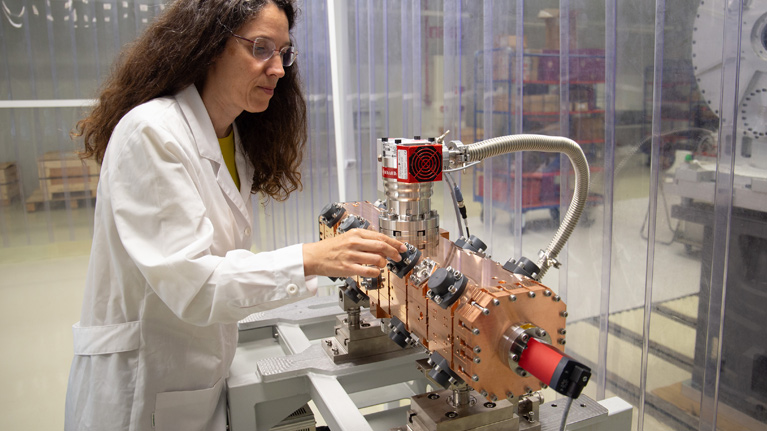A small-scale particle accelerator to boost R&D in oncology
The Tekniker technology centre is currently building research facilities to house activities focused on new cancer therapies and treatments and generate isotopes to detect bodily anomalies.

Proton radiotherapy, also known as proton therapy, is revolutionising oncology. Compared to conventional radiation techniques that use photons, protons are much more accurate as regards the site to be radiated. As this technique reduces the amount of radiation deposited on healthy neighbouring organs and tissues, it offers a very interesting option for paediatric patients or cases in which the tumour is very close to sensitive organs like the lungs or the heart.
Although it has been extensively used clinically for several years, further progress must be made in this area of research to improve the technology, optimise treatments and learn more about the different radiobiological processes involved.
It is in this context that the Tekniker technology centre, a member of the Basque Research and Technology Alliance (BRTA), is currently working within the framework of the LINAC7 project to build a new generation of low-energy particle accelerators (7 MeV) to be installed at the University of the Basque Country (UPV/EHU).
Some of the main goals are, on the one hand, to progress in the area of radiobiological research to optimise oncological treatments and, on the other, to develop useful instruments for the training of students and professionals who will use these technologies in the future.
Tekniker, a pioneer organisation that is already addressing many of the technologies used to design and develop the accelerator, such as high vacuum, thermomechanics, electrical engineering, electronics and control or precision mechatronics, has all the know-how and resources required to address any challenges arising from the project.
So far, the LINAC7 components that have been manufactured are used on the proton source; the first acceleration stage to reach 5 MeV and its diagnostic system; and the beam dump and initial radioprotection calculations. Work is now focusing on developing another acceleration structure to reach a final energy value of 7 MeV.
The accelerator is mainly geared towards the healthcare sector. In addition to the aforementioned studies, it will also be possible to generate radioisotopes for PET, an imaging modality used to detect bodily anomalies (cancer, mental disorders, etc.). Attention will also be paid to the feasibility of adapting the design to generate neutrons and analyse materials.
A unique opportunity for the Basque Country
The LINAC7 project offers a unique upskilling opportunity for the Basque industrial sector in the area of particle accelerators whose demand has grown significantly internationally in different production settings.
Over the next 10 years, and in Spain alone, it has been estimated that up to 10 proton therapy accelerators will be commissioned. One of them will be installed in San Sebastian to optimise oncological treatments.
Amaia Villa, a Tekniker researcher, explains the following: “When treating cancer, our biggest concern is not only related to the amount of radiation that is deposited, but also how the technique is performed. An example of this is the FLASH phenomenon that delivers radiation flashes, i.e., ultra-high dosage rates (a hundred or a thousand times higher than conventional values) in ultra-short time slots (microseconds). This treatment modality only damages the tumour and affects healthy tissues much less. As it is not clear why this happens, more research is required”.
Funded by the Elkartek programme sponsored by the Basque Government, LINAC7 is led by UPV/EHU and has a consortium that includes Tekniker, Egile and Ineustar.
